Ginsburg Offers Praise For Gorsuch And Kavanaugh
Justice Ginsburg has some kind words for her two newest co-workers, perhaps to the surprise of many of Ginsburg's own supporters.
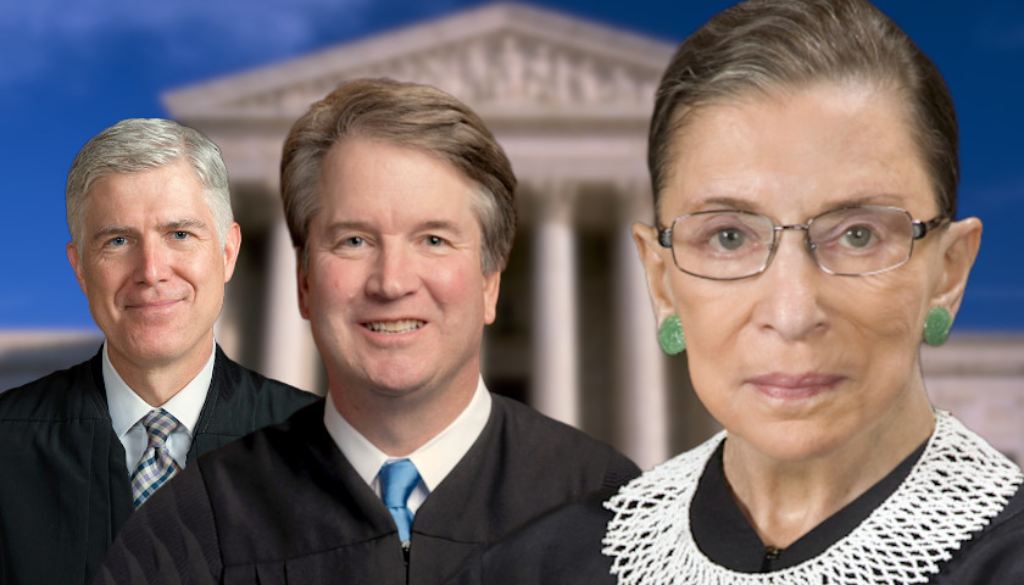
In addition to criticizing some of her fellow liberals for the recent ideas to pack the Supreme Court in order to counterbalance the conservative tilt that President Trump’s appointments have created, Justice Ruth Bader Ginsburg also has some kind words for her newest colleagues:
Justice Ruth Bader Ginsburg has reached hero status among the left and in the Democratic Party. But this week, she has made it clear that she is not on board with their criticism of the Supreme Court, her colleagues or proposals to change the place.
“The court remains the most collegial place I have ever worked,” she said Wednesday night, as she answered questions from one of her former clerks, Neil Siegel, a law professor who runs Duke University’s D.C. Summer Institute on Law and Policy.
Ginsburg stood up for President Trump’s two nominees to the court, and earlier in the week told NPR that she opposed proposals popular with many Democratic presidential aspirants that would either impose term limits on members of the Supreme Court or expand the number of justices.
She said Wednesday night that she would like to see “patriots on both sides of the aisle” turn down the temperature on Supreme Court nominations. “My hope is that we will return to the way it once was,” when a “flaming feminist” like herself could be approved almost unanimously by the Senate.
That seems unlikely.
(…)
Perhaps Ginsburg was affected by the recent passing of retired justice John Paul Stevens. Reflections on his death have inevitably mentioned his fierce independence — he was a Republican appointee who came to head the court’s liberal wing for years — and his collegiality.
Stevens had an unusual “combination of brilliance and humility,” Ginsburg said. “You don’t see those two characteristics together in many people.”
Siegel noted that President Gerald Ford had said he had looked for the best legal mind in the country before selecting Stevens in 1975. He suggested that may not be the criterion for more recent court nominations.
But Ginsburg pushed back gently. “I can say that my two newest colleagues are very decent and very smart individuals,” she said, referring to Trump’s choices of Justices Neil M. Gorsuch and Brett M. Kavanaugh.
Later, she invoked the pair when saying “there are a number of cases this term where we didn’t divide along so-called party lines.”
“Keen observers of what the court does will have noticed that I assigned an opinion this term to Justice Kavanaugh and two to Justice Gorsuch.” The chance to assign majority opinions is dictated by seniority, so Ginsburg has the power only when Roberts and the court’s longest-serving justice, Clarence Thomas, are on the other side.
Ginsburg never mentioned Kavanaugh’s explosive confirmation hearing, during which he denied accusations of a sexual assault when he was a teenager, and senators divided bitterly along party lines on whom to believe.
Instead, as she has before, Ginsburg noted that Kavanaugh “made history” by bringing on an all-female contingent of law clerks. As a result, and for the first time, more women than men held the prestigious jobs last term.
The justices often act as a family, disagreeing vehemently with one another but banding together against outsiders. Ginsburg reminded the audience that the justices shake hands before taking the bench.
“It’s a way of saying, ‘Yeah, you circulated a pretty nasty dissent yesterday,’ ” but we’re in this together. “There’s a lot of togetherness.
Unlike most of official Washington, the Supreme Court has remained one of the few places where you can find the kind of across-the-aisle collegiality that used to be quite common in Congress. That hasn’t always been the case, of course. There have been times in the past where individual Justices just didn’t get along with each other, but more often than not that was based on personality conflicts rather than ideological differences. In part, that appears to be the case simply because of the circumstances the Justices find themselves in. These are, after all, nine people who for better or worse will be working together for years to come. As anyone who has had a bad job can attest to, working in a toxic environment can be exhausting so it’s often for the best to look to the things one has in common with co-workers rather than focus on the differences. The relatively closed nature of the Court also likely serves to emphasize commonalities rather than differences, especially since, as Ginsburg herself notes, there are actually far more cases where the Justices tend to agree, or where the standard left-right differences don’t apply. Just this term, for example, there were many cases that saw combinations on the majority or dissent side that may seem strange to someone who simply looks at the Court through an ideological lens.
Another reason for this collegiality, I think, lies in the nature of the legal profession itself. One of the things you learn in the practice of law, especially when it comes to litigation but also in other areas, is that you can’t judge your colleagues or your adversaries by the arguments they make in court. Those argument, after all, are how they fulfill their role as zealous advocates for their client interests, not a reflection of what the attorney themselves may believe. Because of that, you learn pretty quickly to take the boxing gloves off when you leave the courtroom. Clients probably don’t like it very much when they see their lawyer joking with the advocate for the other side, but that’s the nature of the profession. The man, or woman, on the opposite side of the courtroom may be an adversary today, but tomorrow they could end up being an ally.
Finally, of course, it’s worth noting that Ginsburg is no stranger to having good relationships with her fellow Justices, including those on the other side of the aisle. Her decades-long friendship with Antonin Scalia, which began when the two of them were Judges on the U.S. Circuit Court of Appeals for the District of Columbia has been referenced frequently in the past and is the stuff of legends at this point. Scalia also had a good relationship with Justice Sonya Sotomayor, who shared his love for the Yankees, and Justice Elena Kagan, who went hunting with him several times before he passed away in 2016.
The collegiality is also a reflection on Chief Justice John Roberts, who has reportedly worked hard since being confirmed to his position to ensure that the Justices maintain good relationships with each other. As I said, this hasn’t always been the case in past iterations of the Supreme Court. Given the amount of divisiveness in American politics today, though, it’s good to see there’s still at least one place in Washington where people can disagree without being disagreeable. Too bad the rest of Washington can’t learn a lesson from that.

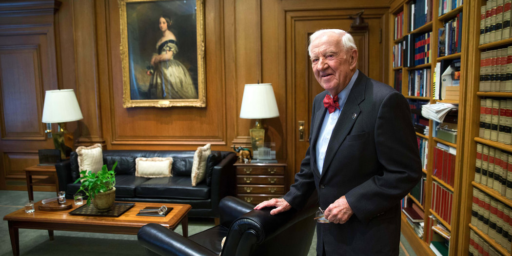
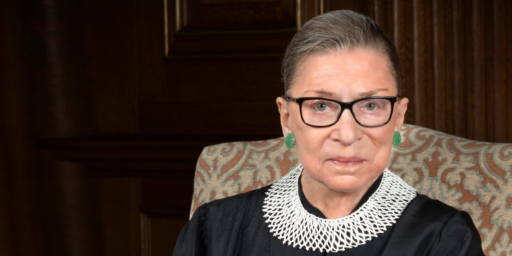

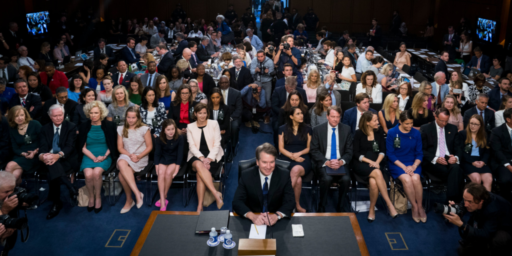
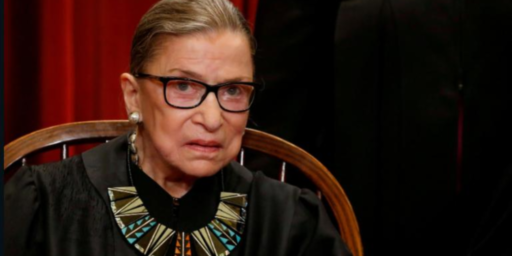
The first time she trips over Justice Boof, passed out in the corridor, I’m sure she will change her tone.
While they served on the court together, William Brennan and William Rehnquist were friends. I don’t think it needs telling how far apart those two were philosophically.
Not surprised. Ginsburg was very close friends with Scalia and they respected the hell out of each other, despite being on very opposite sides in many cases.
Bottom line, she can do her job better if she butters up these guys.
I’m not in the habit of bad-mouthing my coworkers in national media either.
Sort of like the fictional Congressional staff in Charlie Wilson’s War?
Sorry couldn’t help the sarcasm.
There was once a time when politics and ideology did not preclude friendship. John Kenneth Galbraith and William F. Buckley Jr. were very close friends and Buckley was also close to George McGovern. If there were more of these relationships America would be in a better place.
LOL. Does one of the law clerks have a great big on top of their desk too?
@Teve: This! Additionally, it shouldn’t be uncommon for people of good will to be able to disagree and remain collegial or even share a close friendship.
The problem is where we will find people of good will to take these positions of authority in the future.